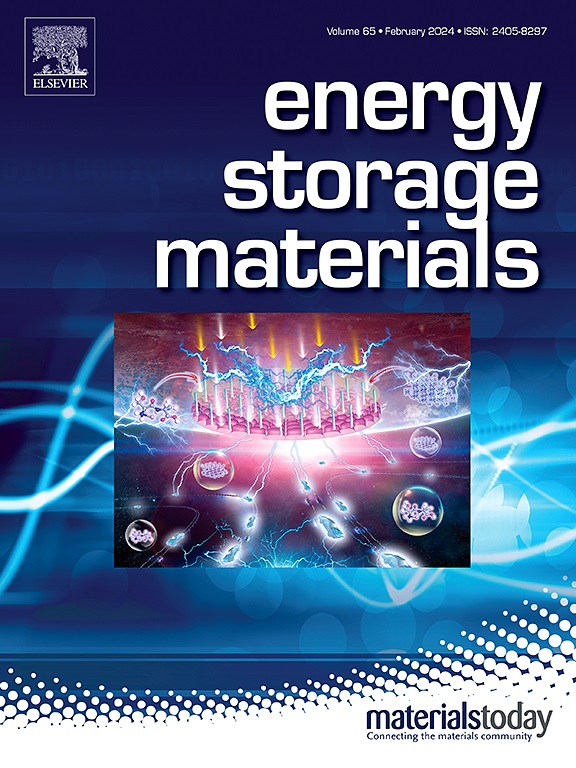Prolonged cycle life of composite cathodes via ionically permeable Li3PO4 surface engineering on conductive agents to suppress degradation of sulfide solid electrolytes
IF 18.9
1区 材料科学
Q1 CHEMISTRY, PHYSICAL
引用次数: 0
Abstract
Sulfide-based all-solid-state batteries (ASSBs) are promising candidates for next-generation energy storage systems owing to their notable ionic conductivity and stability against explosions. However, the low chemical stability of sulfide-based solid electrolytes (SSEs) causes problems at their interfaces with other electrode components. Among them, addressing the side reactions between conductive agents and SSEs is crucial for commercialization. Herein, a conductive agent surface-modified with Li3PO4 is employed to enhance the interfacial stability of SSEs. Density functional theory-based analysis reveals that Li3PO4, characterized by strong inter-element bonding, exhibits high ionic conductivity and stability at the interface with SSEs. Electrochemical measurements confirm that Li3PO4-coated conductive agents suppress the interfacial decomposition of SSEs, thereby securing the targeted ionic conductivity in the composite cathode. Consequently, ASSBs adopting surface-engineered conductive agents demonstrate remarkable rate capability (153.6 mAh g−1 at 2 C) and cycle performance (88.8 % retention over 1000 cycles) with a high areal capacity (4 mAh cm−2). This study provides a novel concept for conductive agents that enhance charge transport characteristics and mitigate SSE degradation, paving the way for the development of long cycle life ASSBs.


求助全文
约1分钟内获得全文
求助全文
来源期刊

Energy Storage Materials
Materials Science-General Materials Science
CiteScore
33.00
自引率
5.90%
发文量
652
审稿时长
27 days
期刊介绍:
Energy Storage Materials is a global interdisciplinary journal dedicated to sharing scientific and technological advancements in materials and devices for advanced energy storage and related energy conversion, such as in metal-O2 batteries. The journal features comprehensive research articles, including full papers and short communications, as well as authoritative feature articles and reviews by leading experts in the field.
Energy Storage Materials covers a wide range of topics, including the synthesis, fabrication, structure, properties, performance, and technological applications of energy storage materials. Additionally, the journal explores strategies, policies, and developments in the field of energy storage materials and devices for sustainable energy.
Published papers are selected based on their scientific and technological significance, their ability to provide valuable new knowledge, and their relevance to the international research community.
 求助内容:
求助内容: 应助结果提醒方式:
应助结果提醒方式:


